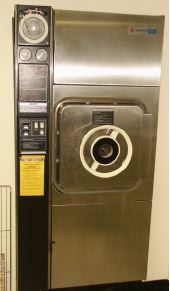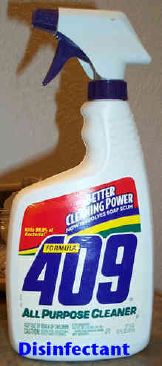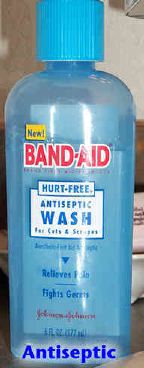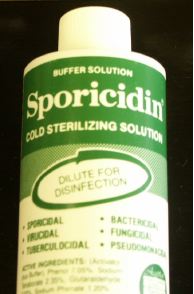Lecture #9: Controlling Microbial Growth II
I. Terminology
A. _______________________
is the removal of all living ______________ ____________________________________________.
1. We use an __________________________
to sterilize all the media and supplies needed for lab.

An autoclave used in the Microbiology prep room.
2. Sterilization is different than ______________________,
which means to reduce the microbial populations to levels considered safe
by ______________________________________________________.
B. ________________________________
kill, inhibit the growth or remove microorganisms present on ______________________________________
like the lab bench. Disinfectants are used to sanitize objects but the do
not necessarily _________________________
those objects.

C. ________________________ are
chemical substances applied to body surfaces in an effort to prevent infection
(_________________).

D. Antiseptics, on average, are _________________________________
than disinfectants as they are manufactured with living tissue in mind.
E. A disinfectant or antiseptic that is particularly effective (strong enough
to kill -__________________) against
a certain group of microorganisms may be called a __________________,
fungicide, algicide, __________________
etc...

II. Mechanisms of action of some agents commonly used as disinfectants and antiseptics
| Agent
|
Mechanism of action |
| _________________
compounds (e.g. _______________)
|
______________
proteins and perturb the _____________ __________________.
|
| _________________
|
Disrupt microbial ____________
_________________________ and denature proteins. |
___________________________
(e.g. iodine and chlorine)
Betadine is an iodophore.
Household _____________ is sodium
hypochlorite. |
Iodine ____________________
cell constituents and iodinates proteins. Reactions involving chlorine result
in the oxidation of cellular materials. |
| _______________
(e.g. isopropanol) |
Denature proteins and extract membrane ______________.
|
| _____________________________
|
Causes ___________________
__________________ of cellular materials. |
|